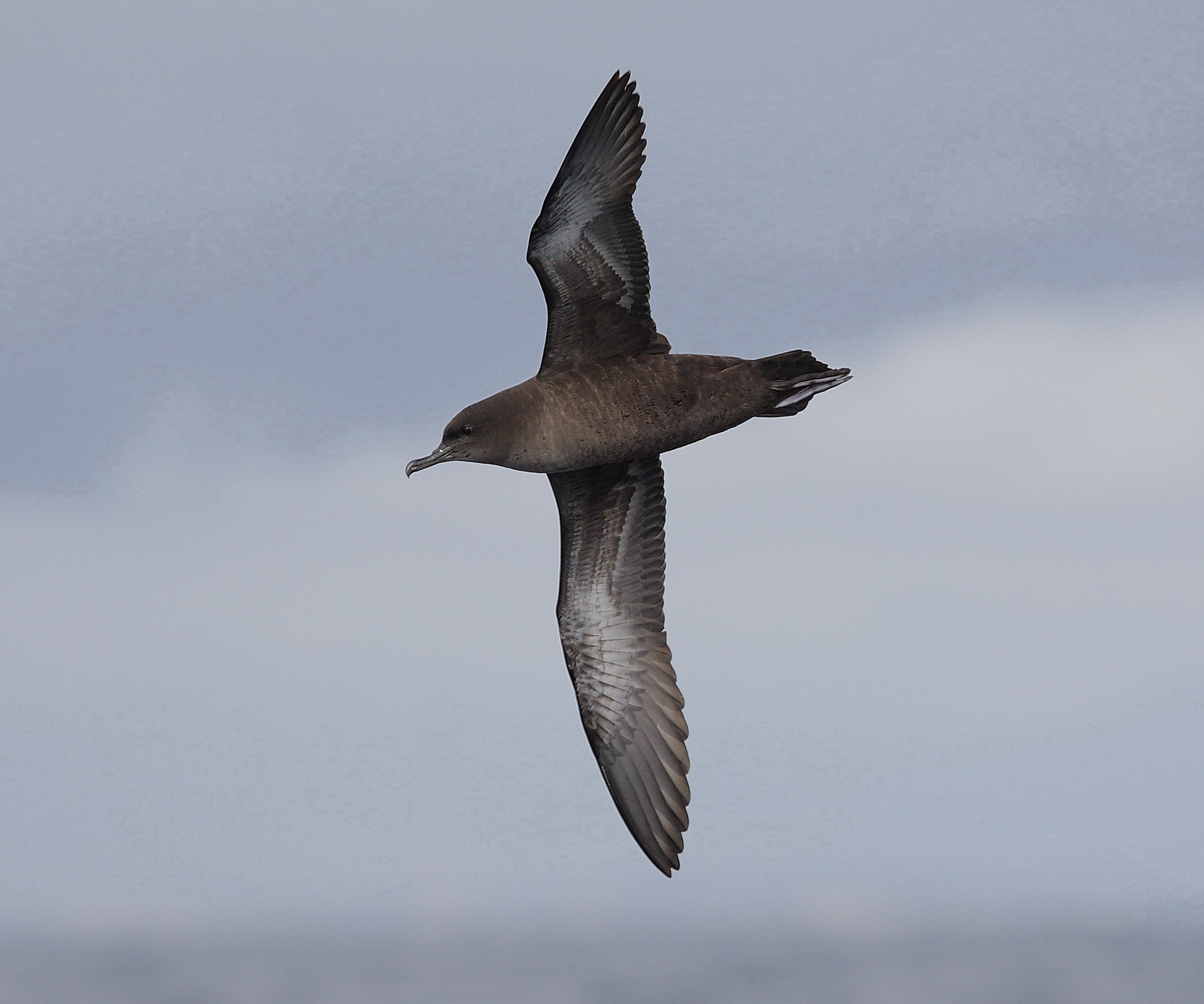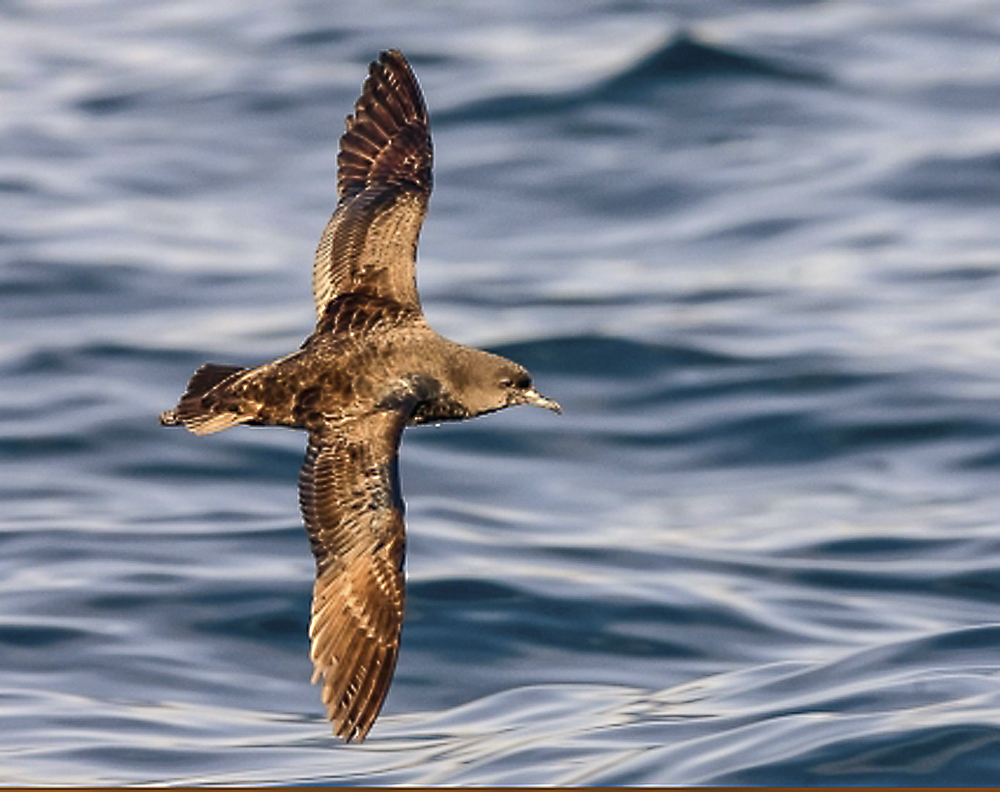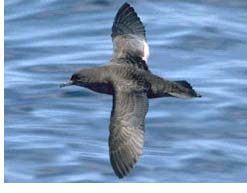
Puffinus tenuirostris
TAXONOMY
Procellaria tenuirostris Temminck, 1835, seas north of Japan and
shores of Korea.
OTHER COMMON NAMES
English: Slender-billed shearwater/petrel, Tasmanian muttonbird;
French: Puffin а bec grкle; German: Kurzschwanz-Sturmtaucher;
Spanish: Pardela de Tasmania.
PHYSICAL CHARACTERISTICS
15.7–17.7 in (40–45 cm), 16.9–28.2 oz (480–800 g), wingspan
37.4–39.4 in (95–100 cm). Dark brownish-gray above, lighter
underneath. Pale chin, dark bill. Dark feet reach beyond short,
square tail.
DISTRIBUTION
Breeds in Tasmania and southern Australia, migrates north
across the equator to arctic reaches, including Alaska. Stays
primarily in the Pacific.
HABITAT
Marine, found near land and in open seas. Typically breeds on
grassy coastal islands.
BEHAVIOR
Forms flocks of up to 20,000.
FEEDING ECOLOGY AND DIET
Fish, crustaceans, and cephalopods. Found with whales. Social
feeding is common, including flocking at dawn and dusk to
feed on swarming euphausids.
REPRODUCTIVE BIOLOGY
Breeding season starts in October, forming crowded colonies
of burrow nests. The single white egg is incubated for 52–55
days; the dark gray to brown chick in brooded for two to
three days; fledging after 94 days. Sexual maturity at 4–6
years in males, five to seven years for females. Can live at
least 30 years.
Parents on Montague Island travel up to 9,600 miles
(15,450 km) round-trip on feeding voyages, the longest flights
known for birds feeding young. Such long journeys may serve
more to replenish the adults’ reserves, than to feed the young.
CONSERVATION STATUS
Not threatened.
SIGNIFICANCE TO HUMANS
Approximately 300,000 chicks are harvested each year from
Tasmania.
Photo Gallery of - Short-tailed shearwater




 Animalia Life
Animalia Life